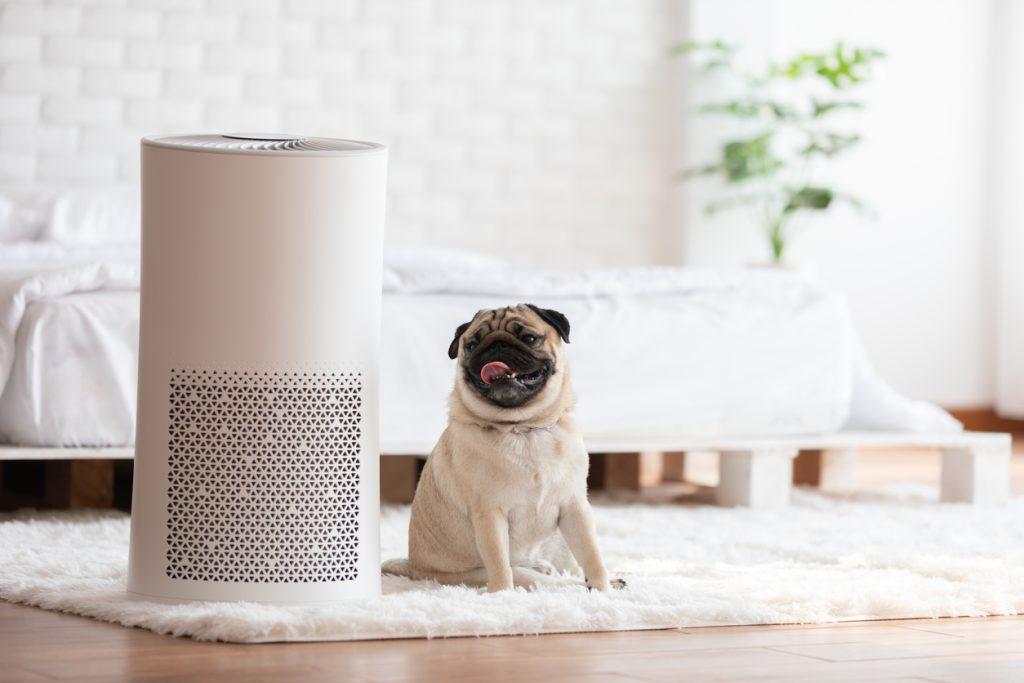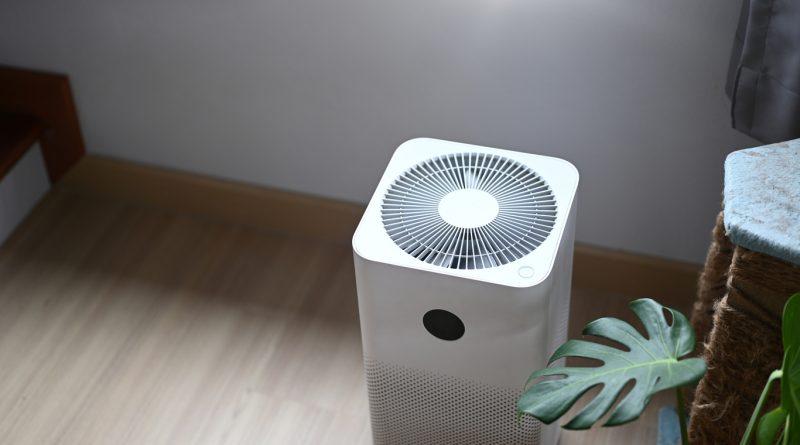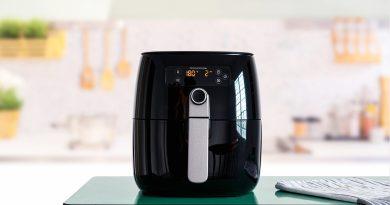Guide to Choosing an Air Purifier for Your Home
Research shows that, on average, we spend 90% of our time indoors. Unfortunately, day-to-day activities can fill your space with pollutants that compromise the air that you breathe. Fortunately, the market is saturated with air purifiers, all of which promise to clean the air around you. At the core of an air purifier is filters that take the air through a specialized filtering process that targets microscopic particles that would otherwise harm your health.
Reasons You Should Consider Purchasing an Air Purifier for Your Home
Putting your lungs at the forefront of filtering any airborne contaminant is a risky undertaking. This is particularly so if you suffer from allergies or asthma or if you have any respiratory illnesses. A quality air purifier should trap any airborne contaminants and filter the air. This pre-filtering takes the stress off of your lungs. Suppose you do not suffer any respiratory issues. Still, having an air purifier significantly improves your health as your home is then full of cleaner air.
Overall, air purifiers reduce allergy symptoms, reduce asthma, improve your quality of sleep, and make breathing easier. The bottom line is that if you have cleaner air, you should enjoy overall good health.
Our Top Picks
Budget pick – Coway AP-1512 HH Mighty
Easiest to use – Blueair Blue Pure 211+
Most energy efficient – Blueair Blue Pure 411
Best for large spaces – Coway Airmega 400
Air Purifier Types
Filtration Systems
Air purifiers that are filter-based seem to be a favorite amongst most consumers. At its tenet, a purifier with a filtration system works similar to a fan by pulling air through a filter where particles and other impurities are trapped.
Consider going with a purifier that has a washable filter. What's more, be on the lookout for air purifiers that incorporate pre-filters, as these can catch bigger particles.
Electrostatic Precipitators
While at its core the electrostatic precipitator works similar to a filter-based air purifier, the former draws air using an electric field and uses electric charges to capture any particles in the air. Some manufacturers also offer units that use a fan to circulate more air. Suppose you have a smaller room. In that case, you probably want to avoid this type of air purifier as this releases some ozone into the space.
Ionizers
If you want an air purifier that delivers more value than both Filtration Systems and Electrostatic Precipitators, consider getting the ionizer. The latter discharges electrons into the air, which then bond to the negative ions of the dust or other pollutants in the air. The result is that these pollutants are effectively trapped, thus making your air purer.
Note that ionizers are practically maintenance-free and do not require costly filter replacements. Still, you will have to deal with the periodic cleaning of the electrostatic plates that collect the impurities.
Air Purifier Filter Types
HEPA Filters
High-Efficiency Particulate Arresting filters or HEPA filters are expected to capture up to 99.97% of any airborne particles measuring greater than 0.3 microns in the air. A filter that meets this standard is referred to as a True HEPA filter.
If you go with an air purifier with HEPA filters, the device will capture more than just dust and fine particles. You get to have smoke, pollen, pet dander, mold spores, bacteria, and even gaseous pollutants removed from your surrounding air.
It would be important to point out that while with the HEPA air purifiers you would have purifiers that do not release the trapped articles back to the environment, you will have to grapple with routine filter replacement. Besides, these do not remove odors and chemical fumes from the surroundings and have been found to be significantly noisy.
Activated Carbon Filters
HEPA filters effectively remove pollutants from the air around you. However, alone, these cannot properly eliminate odors within your space. As such, most air purifiers with HEPA filters will also come with activated carbon filters for that extra level of removal. Depending on the manufacture, you might have these two filters either separated or have the activated carbon filters built into the HEPA filter.
Carbon filter air purifiers are not cheap to replace. Additionally, they lack efficiency as it pertains to the removal of gaseous fumes and odors.
Considerations When Choosing an Air Purifier
Cost Considerations
On average, the price of an air purifier ranges from just under $100 to more than $1000. Regardless of the price tag, these will often operate in the same way. The logistics of how the air purification actually takes place determines the price.
As you shop around, notice that purifiers with advanced filtration systems, those that cover larger spaces, and those packed with high-tech features cost significantly more. Overall, you want your specific needs to guide just how much you end up spending on the air purifier. You have many choices as you have options that range from best-in-class units to budget air purifiers.
Size of the Purifier
The size of the purifier you go for will be determined by the square footage of your space and the air changes per hour you need. Compare the unit's recommended coverage area with the space where you plan to use the purifier in.
Variety of Special Features
As highlighted, the market is saturated with air purifies, all of which come with a host of special features. You want to look out for digital or remote-controlled purifiers. What's more, check for the multiple fan speeds listed and if there is a filter replacement indicator. For that extra functionality, go for a model that has a programmable timer. If you have a problem with mold, fungi, and bacteria, look for one with germicidal protection. If you want high-tech, look for one with WiFi capabilities allowing you to monitor and control your room's air.
Suppose you have asthma or allergies. In that case, you want to consider more than just the square footage of your space. Specifically, you want to pay attention to the Air Changes Per Minute, ACM, which points to the total volume of air within the targeted space has been purified.
Our Top Picks

While there are no air purifiers that can eliminate 100% of the pollutants and allergens, there are products in the market that deliver clean air rates that are simply impressive.
If you are in the market for an air purifier, consider the following brands:
Coway AP-1512 HH Mighty
The Coway Mighty can effectively purify air within a room size of 361 square. The reasonably priced purifier is a true HEPA purifier that comes with a programmable time, four fan speeds, and a filter indicator light. You can get the replacement filters at a fairly cheap rate, and as such, you should have no problems with the maintenance costs. While it has an ionizing function, the safety of the released ions is under question. Additionally, you have to grapple with the loud noise from the device, which can reach as high as 53.8 dB.
Blueair Blue Pure 211+
If you are looking for more than simple functionality, the Blueair Blue Pure 211+ is the air purifier for you. You have a range of five different colors to choose from, which should come in handy when you want to customize your space.
While its filters are not true HEPA certified, the unit comes with filter fibers on which particles get stuck. It comes with filter indicator lights that come in handy when it is time to replace the device.
The downside of the machine is just how much noise it produces, even when it is at lower speeds. What's more, you have to deal with significantly higher purchase price and maintenance costs.
Blueair Blue Pure 411
If you are looking for energy efficiency at a rather affordable price range, the Blueair Blue Pure 411 is the air purifier for you. The 411 is much bigger than the 211+, which translates to larger spaces being purified at a time. Maintenance and replacement of parts are relatively inexpensive, yet you still get premium quality air.
Overall while the 411 is smaller, more compact, and quieter, it only works in limited spaces such as study rooms or bedrooms.
Coway Airmega 400
Suppose you want to purify the air in a significantly larger space. In that case, the Coway Airmega 400 is the purifier for you as it can cover a maximum of 1560 square feet. The purifier comes with both carbon and true HEPA filters, which then translates to the cleaning of air within a large space over a significantly short period of time. While the Airmega 400 is quite large, it is simply sleek and comes with convenient features that quieter operations.
Conclusion
While air purifiers are not a panacea for improving the quality of your indoor air, they significantly improve it. Concisely, as you try and find one to remove pet dander, cigarette smoke, or any other pollutant, consider one with the best CADR ratings, that uses a HEPA filter, and has the noise levels. Additionally, consider the ongoing maintenance and electricity costs for the unit that you go for. Finally, check for bonus features, including app integration and other features. As you seek to make your home both safe and comfortable with a state-of-the-art air purifier, check out the other products reviewed on a blog as well.




